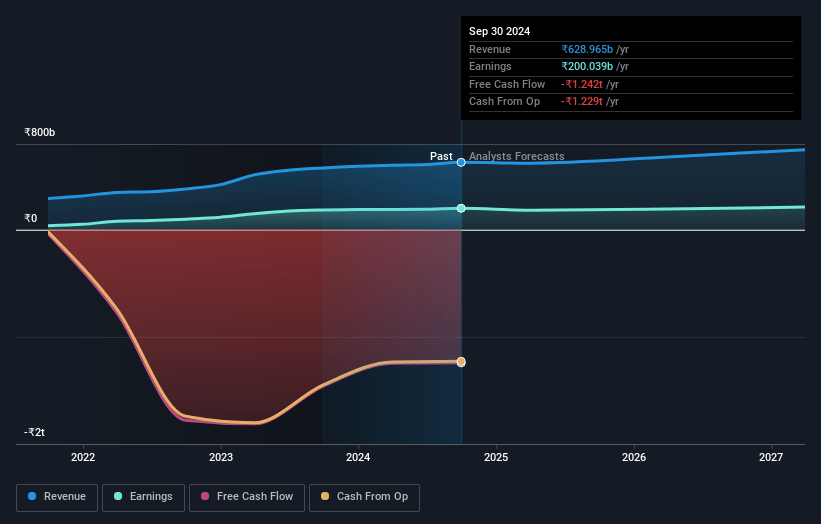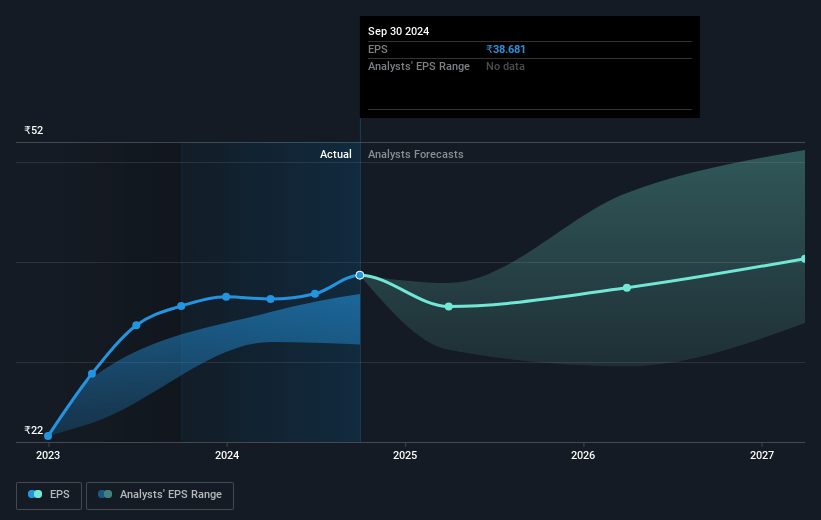Key Takeaways
- Strategic shift towards high-margin segments like retail and MSME lending could enhance net margins and reduce risk.
- Emphasis on digitalization and improved asset quality may increase operational efficiency and boost future earnings.
- Reliance on bulk deposits and rising GNPA could pressure margins and elevate credit risk amid shifting interest rates and liquidity conditions.
Catalysts
About Bank of Baroda- Provides various banking products and services to individuals, government departments, and corporate customers in India and internationally.
- Bank of Baroda's growth in retail loans, particularly in segments like auto and personal loans, is expected to significantly enhance their future revenues given the strong demand and the bank's focus on expanding its retail assets.
- The bank's focus on retailizing its book with an increased emphasis on Retail, Agri, and MSME (RAM) lending indicates a strategic shift towards higher-margin, lower-risk segments, potentially increasing their net margins.
- Continued improvements in asset quality, with a reduction in both gross and net NPAs, suggest future reductions in provisioning costs, thereby boosting future profit margins.
- The significant growth in CASA (Current Account Savings Account) deposits at 6.5% Y-o-Y, better than peer banks, can lead to a more stable and cheaper source of funding, positively impacting the bank’s net interest margin.
- Bank of Baroda’s emphasis on digitalization and winning awards in digital technology segments indicates a potential for enhanced operational efficiency, which could drive future earnings growth through cost optimization.
Bank of Baroda Future Earnings and Revenue Growth
Assumptions
How have these above catalysts been quantified?- Analysts are assuming Bank of Baroda's revenue will grow by 7.4% annually over the next 3 years.
- Analysts assume that profit margins will shrink from 32.0% today to 26.5% in 3 years time.
- Analysts expect earnings to reach ₹209.7 billion (and earnings per share of ₹40.44) by about March 2028, up from ₹204.3 billion today. However, there is a considerable amount of disagreement amongst the analysts with the most bullish expecting ₹250.6 billion in earnings, and the most bearish expecting ₹169.8 billion.
- In order for the above numbers to justify the analysts price target, the company would need to trade at a PE ratio of 10.2x on those 2028 earnings, up from 5.6x today. This future PE is greater than the current PE for the IN Banks industry at 9.8x.
- Analysts expect the number of shares outstanding to remain consistent over the next 3 years.
- To value all of this in today's terms, we will use a discount rate of 14.63%, as per the Simply Wall St company report.
Bank of Baroda Future Earnings Per Share Growth
Risks
What could happen that would invalidate this narrative?- The rise in domestic advances yield was modest despite significant loan growth, raising concerns about potential pressure on net interest margins in the future. (Net Margins)
- International margins have slightly declined this quarter, and while they are expected to stabilize, further global economic fluctuations could impact these margins adversely. (Net Margins)
- The bank's personal loan segment has seen a 7% growth quarter-on-quarter, but this has also been accompanied by a rising GNPA ratio, which could elevate credit risk if not managed carefully. (Asset Quality)
- There is a reliance on bulk deposits, which increased in the recent quarter, posing a risk to the cost of funds if interest rates shift unexpectedly or liquidity conditions tighten. (Earnings)
- The decline in the recovery from written-off accounts this quarter compared to a one-off high in the previous quarter suggests that future profitability could be vulnerable to similar fluctuations in such non-core income. (Earnings)
Valuation
How have all the factors above been brought together to estimate a fair value?- The analysts have a consensus price target of ₹273.485 for Bank of Baroda based on their expectations of its future earnings growth, profit margins and other risk factors. However, there is a degree of disagreement amongst analysts, with the most bullish reporting a price target of ₹320.0, and the most bearish reporting a price target of just ₹200.0.
- In order for you to agree with the analyst's consensus, you'd need to believe that by 2028, revenues will be ₹791.0 billion, earnings will come to ₹209.7 billion, and it would be trading on a PE ratio of 10.2x, assuming you use a discount rate of 14.6%.
- Given the current share price of ₹220.34, the analyst price target of ₹273.48 is 19.4% higher.
- We always encourage you to reach your own conclusions though. So sense check these analyst numbers against your own assumptions and expectations based on your understanding of the business and what you believe is probable.
How well do narratives help inform your perspective?
Disclaimer
Warren A.I. is a tool utilizing a Large Language Model (LLM) that ingests data on consensus price targets, forecasted revenue and earnings figures, as well as the transcripts of earnings calls to produce qualitative analysis. The narratives produced by Warren A.I. are general in nature and are based solely on analyst data and publicly-available material published by the respective companies. These scenarios are not indicative of the company's future performance and are exploratory in nature. Simply Wall St has no position in the company(s) mentioned. Simply Wall St may provide the securities issuer or related entities with website advertising services for a fee, on an arm's length basis. These relationships have no impact on the way we conduct our business, the content we host, or how our content is served to users. The price targets and estimates used are consensus data, and do not constitute a recommendation to buy or sell any stock, and they do not take account of your objectives, or your financial situation. Note that Warren A.I.'s analysis may not factor in the latest price-sensitive company announcements or qualitative material.




